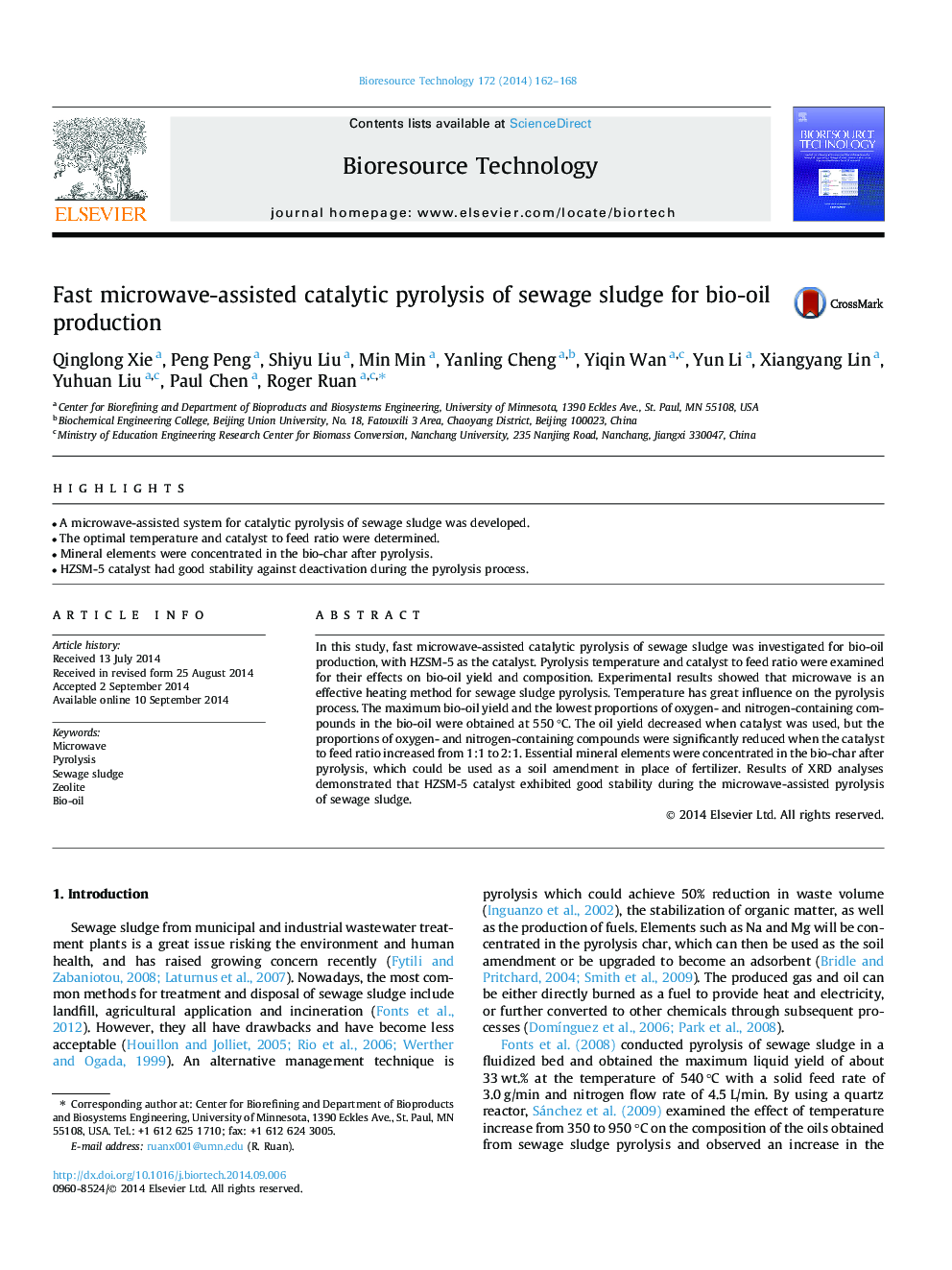| Article ID | Journal | Published Year | Pages | File Type |
|---|---|---|---|---|
| 680540 | Bioresource Technology | 2014 | 7 Pages |
•A microwave-assisted system for catalytic pyrolysis of sewage sludge was developed.•The optimal temperature and catalyst to feed ratio were determined.•Mineral elements were concentrated in the bio-char after pyrolysis.•HZSM-5 catalyst had good stability against deactivation during the pyrolysis process.
In this study, fast microwave-assisted catalytic pyrolysis of sewage sludge was investigated for bio-oil production, with HZSM-5 as the catalyst. Pyrolysis temperature and catalyst to feed ratio were examined for their effects on bio-oil yield and composition. Experimental results showed that microwave is an effective heating method for sewage sludge pyrolysis. Temperature has great influence on the pyrolysis process. The maximum bio-oil yield and the lowest proportions of oxygen- and nitrogen-containing compounds in the bio-oil were obtained at 550 °C. The oil yield decreased when catalyst was used, but the proportions of oxygen- and nitrogen-containing compounds were significantly reduced when the catalyst to feed ratio increased from 1:1 to 2:1. Essential mineral elements were concentrated in the bio-char after pyrolysis, which could be used as a soil amendment in place of fertilizer. Results of XRD analyses demonstrated that HZSM-5 catalyst exhibited good stability during the microwave-assisted pyrolysis of sewage sludge.
